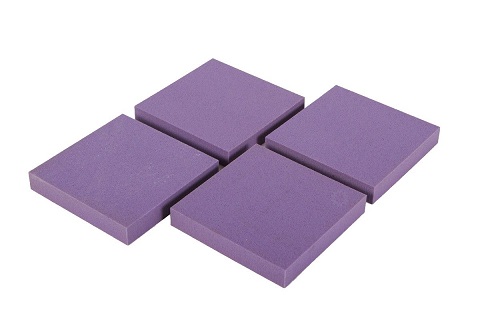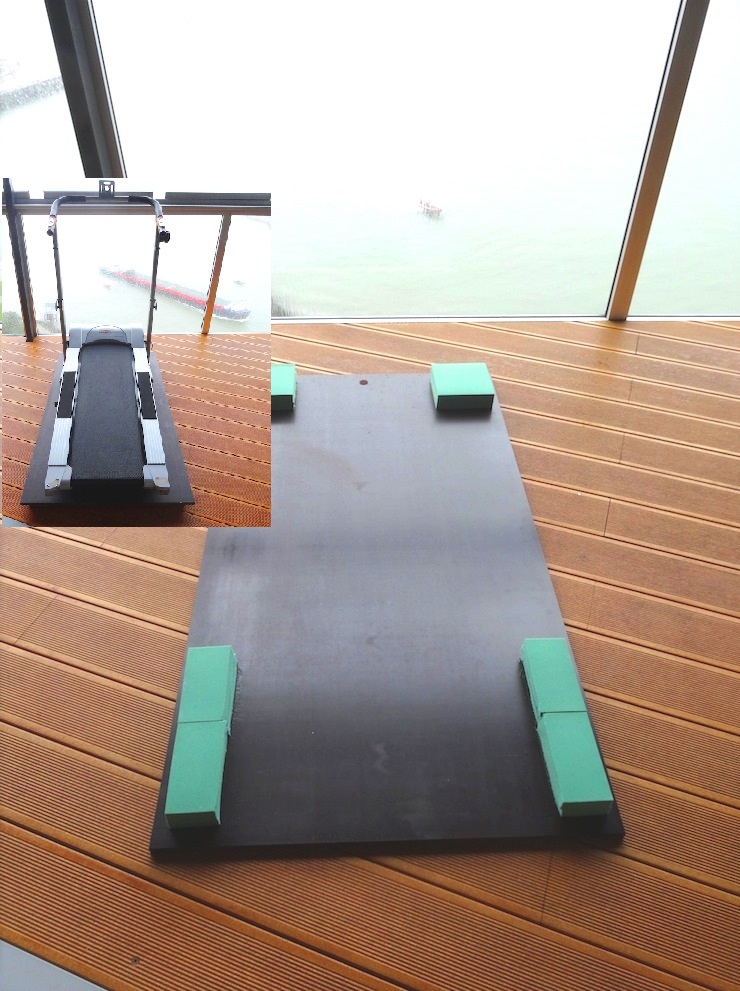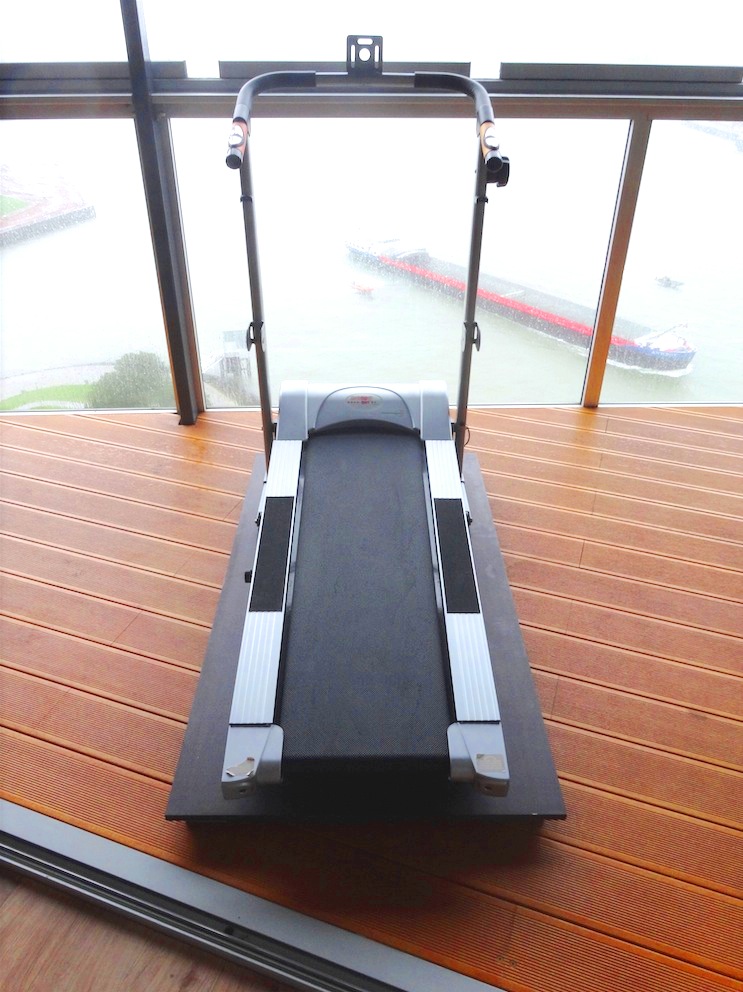The noise problem of treadmills
The treadmill, or rather, running on a treadmill, can cause a noise problem referred to as contact noise. This means that the noise problem is caused by physical vibration of a building's structure. Solving a noise problem that is caused by contact noise is relatively easy if it is solved at its roots. That is exactly what this article is about.
What you need with regards to products
As for decoupling the treadmill (or exercise bike), 3 sets of UniDamper Basic are needed and one spray can of Zettex contact glue or one sealant tube Sika Flex Sealant, whichever you find most comfortable to work with.
As an extra layer (to be taken care of yourself), we recommend placing a plywood plate with a thickness of 18 mm between the UniDamper Basic and the treadmill. This plate should be at least 15 cm wider and longer than the treadmill itself. The UniDampers are relatively soft, and this plywood plate distributes the weight over the dampers while providing stability. However, the plate has no acoustic function.
Installing the UniDampers 
The UniDampers are placed on top of each other, resulting in six dampers of 156 x 156 x 50 mm in size. You place a damper at every corner of the plywood plate, or under every corner of the treadmill (in case you don't provide the extra layer). Now, you have two UniDampers left, which are placed under the plate or treadmill as well, exactly under the place where you touch the treadmill during exercise. When the dampers are in the right place, you can glue or seal them.
The end result
In case you're not satisfied by the result, this may be due to too much resistance from the dampers. The pressure on the UniDampers, caused by the total weight of the treadmill plus person, may be too low, rendering the intended decoupling disfunctional. This can happen to lightweight individuals or in case the treadmill rests on a wooden floor. Remove and relocate 1 or 2 sets of dampers to the middle so that the other dampers can be pressed in further. Always pay attention to the stability of the treadmill (or exercise bike) and distribute the weight well over the dampers. Possible legs of the gym equipment should not press into the dampers.

Photos and comment deriving from a satisfied customer
Running outside is healthy and fun, but not in case of bad weather. In those cases a (in my case engineless) treadmill is a great alternative. But a treadmill inside an apartment with downstairs neighbours can of course lead to (noise) problems. So, I asked the Acoustics Shop for advice. They replied immediately: I was advised to put the treadmill on a sheet of plywood with a double set of washing machine dampers underneath. So in the end I bought (because of the finishing) a sheet of 18 mm concrete plywood containing an anti-slip side, gluing took me half an hour, and on the first drizzly day I could try out the combination. Naturally, the plate on the dampers slightly moves while walking (and especially while running), but the sound of the treadmill is not transmitted to the floor at all. In short: mission accomplished!

More solutions for fitness equipment
Do you have an exercise bike that causes a noise problem? We have a solution for this as well!
Questions? 
Do you have any questions about this topic? Please feel free to contact us

 Sound Absorption
Sound Absorption  Sound Insulation
Sound Insulation  Vibration Isolation
Vibration Isolation  Silent Ventilation
Silent Ventilation  Accessories
Accessories  Thermal & Acoustic Insulation
Thermal & Acoustic Insulation